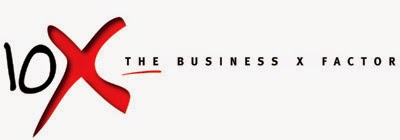A great customer relationship is based on trust - and a trusted relationship is based on a foundation of clarity, clear expectations and no surprises.
It’s like a marriage - and a marriage (in Jewish law is governed by a “Ketuba” which is read in full at the wedding.)
Similarly, your relationship with your customer should be governed by a well-crafted, customer focussed Service and Confidentiality Agreement (SCA) which defines what your customer can fairly expect, how you plan to deliver that service - and of course - what you expect of them
Your customers have to know that you put them first.
So what is a Service and Confidentiality Agreement an SCA
Your SCA is an agreement between you and your customers and makes sure you both have a clear and concise definition of services, responsibilities, timelines, and guarantees.
It will deliver clear advantages to you and your customers and should be an integral part of your customer onboarding process.
It should specify exactly what is (and is not) covered, document roles and responsibilities of both parties, and define service prerequisites that set you up for success.
When you’re clear on expectations, you’ll be able to measure and manage the user experience in a meaningful way and position yourself as a trusted advisor.
The better your agreement, the more you and your clients benefit.
Your SCA delivers peace of mind to your customers, who can refer to agreed-upon deliverables, see clearly defined terms of service, and access specific instructions for support and escalation.
Since your SLA is a legal document, you also want to make sure a qualified legal professional who understands the industry and any relevant verticals or regulatory considerations reviews it.
Some of the things to include
- Your availability and contact details
- Fees and Payment Schedule
- Taxes
- A clear explanation of your service
- Your brand promise
- Inclusions and Exclusions - identify specifically what is and is not covered to avoid confusion on both sides.
- Performance Measurement - Include that you Address concerns immediately, so your customers feel heard Monitor compliance by measuring your progress against SCA goals. Rely on reporting to help you keep customers aware of how you’re meeting and exceeding your SCA promises. (Regular feedback forms)
- Your guarantee
- Incident Management Process and Response Time
- Limitation of Liability
- Service Requirements
- Minimum Standards
- Confidentiality
- Security
- Reporting. Providing real-time performance to customers through automated reporting provides full transparency into the real status of the agreed upon metrics.
“If used correctly, the SCA Agreement can be your most effective sales tool and the ultimate source of your profit and protection.”
Regular review of your SCA
“It costs approximately six times more to attract a new client than to retain an old one.”
Things change in every relationship, and your relationship with your customer is no different.
On a pre-established, regular schedule, you should meet with your customer to revisit your SCA and make sure it is still meeting the needs of both parties. If it isn’t, you might need to refresh.
5 reasons why it might be time to refresh your SCA
You’re offering a new service. Don’t set yourself up for failure by allowing new services— with new requirements—to be governed by an old SCA
Your team is struggling to meet timelines.
If you can’t meet current SCA expectations, especially if it’s because you’re constantly delivering higher quality work, it’s time to renegotiate.
If you’re losing customers to SCA- related disputes, especially at a higher rate than the industry average, it’s time to make some changes.
It’s confusing. If you’re constantly getting questions about a
particular section of your SLA, rewrite it for clarity.
It isn’t keeping up.
Technology changes fast, and sometimes your
SCA might not reflect the change. Use revision time to update your standards and stay competitive.
It’s all about customer satisfaction
Your business is only as good as your reputation - and a solid reputation is based on the satisfaction of your customers .
Customer Satisfaction is the key to success
“90% of customers who are satisfied with you will recommend and refer you to your peers.”
